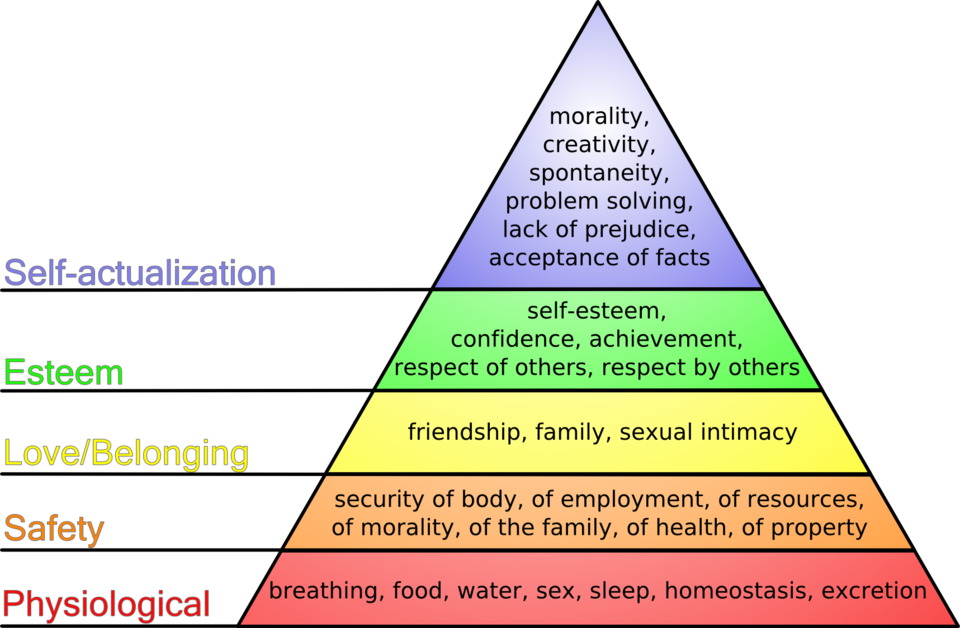Niveau d'aptitude
3
An
2005
Version
02.12.2025
Autorité approbatrice
Conférence Générale
| This honor is available only to clubs outside the North American Division. For those inside the North American Division, use the Crisis Intervention honor instead. |
1
1a
Jesus saw this trap immediately, but His main concern was not for himself but for Mary Magdalene. Yes, she had sinned, but so have we all, and His mission was to save sinners. Jesus extricated Himself from the trap while showing her great tenderness and compassion. His writing in the dirt was a list of "secret" sins committed by her accusers. He continued outlining these sins until all the accusers drifted away, eager for their own sins to be kept secret.
Finally, He turned to Mary, counseled her to leave her life of sin and granted her forgiveness. She followed Him devoutly after this incident, washing His feet with perfume at the home of Simon, and standing at the foot of the cross during the crucifixion. She was the first person to see Him after the resurrection.
1b
1At that time the disciples came to Jesus and asked, "Who is the greatest in the kingdom of heaven?"
2He called a little child and had him stand among them. 3And he said: "I tell you the truth, unless you change and become like little children, you will never enter the kingdom of heaven. 4Therefore, whoever humbles himself like this child is the greatest in the kingdom of heaven.
5"And whoever welcomes a little child like this in my name welcomes me. 6But if anyone causes one of these little ones who believe in me to sin, it would be better for him to have a large millstone hung around his neck and to be drowned in the depths of the sea.
The people in crisis in this verse are the disciples, only they did not realize that they were in any danger. They were looking for Jesus to settle their disagreement over which of them was the greatest in the kingdom of heaven. Their arrogance and pride were threatening their very salvation!
Jesus clearly pointed their error out to them in a most non-threatening way. When we see someone we love on a course to destruction, it is our duty to try to set them straight as well. However, the way we do this is just as important as the decision to do it. Jesus did not jump up and down and scream, nor did He insult His disciples and tell them they were ruining their lives (even if they were). Rather, He gently pointed out the way they should have been acting and admonished them to follow the example He set before them.
1c
Now two prostitutes came to the king and stood before him. One of them said, "My lord, this woman and I live in the same house. I had a baby while she was there with me. The third day after my child was born, this woman also had a baby. We were alone; there was no one in the house but the two of us.
"During the night this woman's son died because she lay on him. So she got up in the middle of the night and took my son from my side while I your servant was asleep. She put him by her breast and put her dead son by my breast. The next morning, I got up to nurse my son—and he was dead! But when I looked at him closely in the morning light, I saw that it wasn't the son I had borne."
The other woman said, "No! The living one is my son; the dead one is yours."
- But the first one insisted, "No! The dead one is yours; the living one is mine." And so they argued before the king.
The king said, "This one says, 'My son is alive and your son is dead,' while that one says, 'No! Your son is dead and mine is alive.' "
Then the king said, "Bring me a sword." So they brought a sword for the king. He then gave an order: "Cut the living child in two and give half to one and half to the other."
The woman whose son was alive was filled with compassion for her son and said to the king, "Please, my lord, give her the living baby! Don't kill him!"
- But the other said, "Neither I nor you shall have him. Cut him in two!"
Then the king gave his ruling: "Give the living baby to the first woman. Do not kill him; she is his mother."
When all Israel heard the verdict the king had given, they held the king in awe, because they saw that he had wisdom from God to administer justice.
This story is a primary reason Solomon was considered the wisest man to ever live. By setting up a scenario that forced both mothers to choose he deduced which was the true mother.
2
Teenagers are humans (contrary to some rumours) and therefore are subject to the same human needs as shown on the pyramid. However, as people in transition to an adult world, teenagers face additional decisions and challenges. With less experience in handling crisis situations than older people, teenagers may need to learn tools and skills to cope with life. Families are also comprised of humans who must function in relationships with each other. Families with teenagers are in for an interesting time as their teenagers grow up, leave home, study, find love and enter the workforce.
Once they get into a discussion, Teenagers will, however, focus on the human needs that are most pressing for them.
Discussion topics may include:
- Divorce and family recombinations that place stress on family members
- Decisions about school and career
- Job loss and economic crisis in the family
- Dating and romance
- Self esteem challenges
- Suicide thoughts
- Peer pressure to try illegal, unhealthy or immoral things
- Family violence and other types of abuse
- Loss of a family member or loved one
- etc
Often in any crisis whether it be a wide area disaster or the loss of a close family member the emotional crisis can be devastating to an individual. Not all people are emotionally equipped to react and continue to even function when facing what many would call an overwhelming situation. For these people immediate assistance is needed as they may have frozen themselves in a dangerous location, may become depressed even to the point of suicidal or may react in outrage and violent fashion.
To help to bring these reactions to a close or to a point controllable first the person must be helped to a place physically and mentally where they are not in immediate danger and they must be helped to realize this. In the case of the loss of a parent this may mean that the teen is helped to realize that they have many friends, and family, a community that will help them to go on and provide for their needs.
The human needs of any individual start with the same basics: shelter, water, and food. As Christians we recognize the need first for God and our relationship with Him and will remind those we help to keep this need first in all things. Beyond these basic needs there are possibly physical, medical, and emotional support needs that will be considered. A person injured in the fire that has destroyed his home needs medical attention before he needs emotional support (although the two may come nearly simultaneously at times). In professional occupations that deal with high stress matters or regular human suffering the emotional support to follow is most often called Critical Incident Stress Debriefing. This is a form of counseling that is important not only to professionals like firefighters but also to families and communities in need.
The stress of an incident can be overwhelming and may manifest itself some great time later or be a fixture in a person's actions and outlook to life. Although not all people are affected by such stress it is best to see to the potential needs of a person in crisis to avert the possible self destruction that may come. In this we consider not only what a person says they are feeling and facing, not only what they have gone through, but in the long term what they are like today vs. the person they were before their crisis.
In immediate intervention you will be a shoulder to lean on, someone to offer support, to be yelled at, to be cried to. You will offer encouragement and help to arrange for those basic needs of shelter, water, and food. You will report to your "supervisor" in intervention any issue you observe that may need to be referred to professional counseling. You will be a friend.
Families face a variety of crisis situations and some things that some may not consider to be a crisis can be devastating. For this purpose we will list common crisis situations:
- House fire
- Death of a loved one
- Loss of income
- Terminal disease
- Birth Defects
- Multiple Births (quintuplets for example, imagine five kids at one time could be stressful)
- Serious Injury
- Natural Disaster
3
Maslow's hierarchy of needs is often depicted as a pyramid consisting of five levels: the four lower levels are grouped together as being associated with Physiological needs, while the top level is termed growth needs associated with psychological needs. Deficiency needs must be met first. Once these are met, seeking to satisfy growth needs drives personal growth. The higher needs in this hierarchy only come into focus when the lower needs in the pyramid are satisfied. Once an individual has moved upwards to the next level, needs in the lower level will no longer be prioritized. If a lower set of needs is no longer being met, the individual will temporarily re-prioritize those needs by focusing attention on the unfulfilled needs, but will not permanently regress to the lower level. For instance, a businessman at the esteem level who is diagnosed with cancer will spend a great deal of time concentrating on his health (physiological needs), but will continue to value his work performance (esteem needs) and will likely return to work during periods of remission.
4
When interacting, people often are not listening attentively to one another. They may be distracted, thinking about other things, or thinking about what they are going to say next, (the latter case is particularly true in conflict situations or disagreements).
Active listening is a structured way of listening and responding to others. It focuses attention on the speaker. Suspending one’s own frame of reference and suspending judgment are important in order to fully attend to the speaker.
It is important to observe the other person's behavior and body language. Having heard, the listener may then paraphrase the speaker’s words. It is important to note that the listener is not necessarily agreeing with the speaker—simply stating what was said. In emotionally charged communications, the listener may listen for feelings. Thus, rather than merely repeating what the speaker has said, the active listener might describe the underlying emotion (“you seem to feel angry” or “you seem to feel frustrated, is that because…?”).
Individuals in conflict often contradict one another. This has the effect of denying the validity of the other person’s position. Either party may react defensively, and they may lash out or withdraw. On the other hand, if one finds that the other partly understands, an atmosphere of cooperation can be created. This increases the possibility of collaborating and resolving the conflict.
5
5a
When setting the scene the two parties in conflict come together. It is important to listen to the other side without interjecting defenses of your own position. Otherwise this will descend into an argument and nothing will be resolved. Use active listening techniques, meaning you repeat your understanding of what has just been said to you. If your understanding is incorrect, the person whose views you have misconstrued will let you know. Be careful that active listening does not become arguing.
Pay special attention to the interests of the other party. Find out what their concerns are. Keep in mind that they may have valid objections to the solution you wish to put forward, and that it is very possible that you yourself could be wrong.
When presenting your side of the story emphasize that you are relating your perception of the problem. The goal here is to get the other party to recognize your concerns and interests.
5b
Both sides have presented their perception of the problem and have stated their interests and goals. Now it is time to explore these viewpoints.
5c
In this phase you are trying to clarify exactly what the problem is. It is very possible that up to this point the two parties have been arguing over two different issues. Try to come up with a mutually agreed statement of the problem.
5d
Once the parties have agreed on a definition of the problem, it is time to start putting out possible solutions. No solution should be judged at this point, as doing so will inhibit the flow of ideas. Write every idea down, no matter how crazy it seems. By not judging the solutions at this point, the floor is open to everyone present. Be sure that everyone there is engaged and is presenting ideas. The less assertive will resist this, especially if ideas are being shot down as they are presented.
5e
Use the method outlined in the previous requirement. Once you have come up with several solutions, evaluate them as objectively as possible. Think about how people will be affected by each approach. Eliminate the solutions that will likely make the problem worse. Then examine the remaining solutions. Which one will benefit the most people? Will that one hurt someone else? Do the benefits outweigh the costs? Lead the person with whom the decision lies through this analysis and let them choose a course of action. It is possible that the person may tell you that they will solve the problem the way you suggest just to shut you up, so be aware of that. Try to get the person to buy into the solution. If no good solution can be found try brainstorming again. It is possible that there is no good solution though, and the person may be faced with nothing but bad choices. The goal here is to find the best solution, not necessarily a good solution.
6
When your friend is facing a crisis that is too big for you to handle, you need to refer him to someone with professional training. Doing this is not abandoning your friend, but rather, recognizing that his problems are beyond your ability to help. There are four steps in making a referral:
- Prepare your friend
- Before you can prepare your friend, you are going to need a lot of information about the services professional offers and have a concrete understanding of how it can help. Then you need to share that information with your friend. Assure your friend that seeking professional help is not a sign of weakness. Rather, it is often the most effective and least painful path to recovery.
- Get your friend's participation
- The decision to see a professional belongs to your friend, not to you. Do not pressure your friend into making this decision. It may take some getting used to, and the decision might take a long time to make.
- Prepare the professional
- Once your friend has decided to see the professional, you should call and talk to them. Do not make the appointment for your friend. Ideally your friend should to that for himself, but if the situation is especially urgent, you might make the appointment for your friend yourself. When you speak to the professional, tell them as much as you are comfortable about the situation, and why you think the referral is important. The more the counselor knows about the problem, the better able he will be to help. Make sure that the things you have told your friend about the professional hold true, and ask if they think they can really help.
- Follow up
- After your friend's first appointment, ask how it went. You do not need to pry into the details of the session, but you should certainly ask if there is anything you can do to help your friend. Your continued support can help ensure a positive outcome.
7
The point of this requirement is for the individual to examine his own reasons for wanting to help someone. Unfortunately, there are many more bad reasons to want to get involved than there are good reasons. The only valid reason to get involved is out of love. Invalid reasons include curiosity, the desire to gossip, the desire to feel better about oneself for helping, or out of a sense of wanting to control the other person's life. Sometimes people think that their friends cannot get themselves out of their mess without their help. There are almost certainly more invalid reasons for getting involved than those listed here. But that doesn't mean you should not get involved. Just be sure you are doing so for the right reason!
Historical Note
This honor was previously called Crisis Intervention. In 2009 it was renamed Conflict Resolution and somewhat rewritten. Much of it is the same as before, but there are some major differences.
References
- How to Help a Friend (second edition) by Paul Welter, Tyndale House, Wheaton, Illinois (1991)
- Christ-Centered Caring by Ronaele Whittington, AdventSource, Lincoln, Nebraska (1990)
- Mind Tools: Conflict Resolution




